Published: 07/07/2025
In the footsteps of Katherine of Aragon. After the annulment of her marriage to Henry VIII, Katharine of Aragon stayed at Buckden Towers for 18 months during 1533/1534 before moving to Kimbolton Castle where she led a semi-reclusive life until her death in 1536.
A coach took 38 of us on this wonderful day out to visit Buckden Towers and Kimbolton Castle which fortunately fell between heatwaves and downpours. Although both locations are about 30 minutes from Bedford, they are not well known, so an ideal opportunity for an interesting day out without travelling too far.
Buckden Towers
Our first stop was where Katherine of Aragon lived for a short time. She is very much remembered there and is visible in one of the windows.
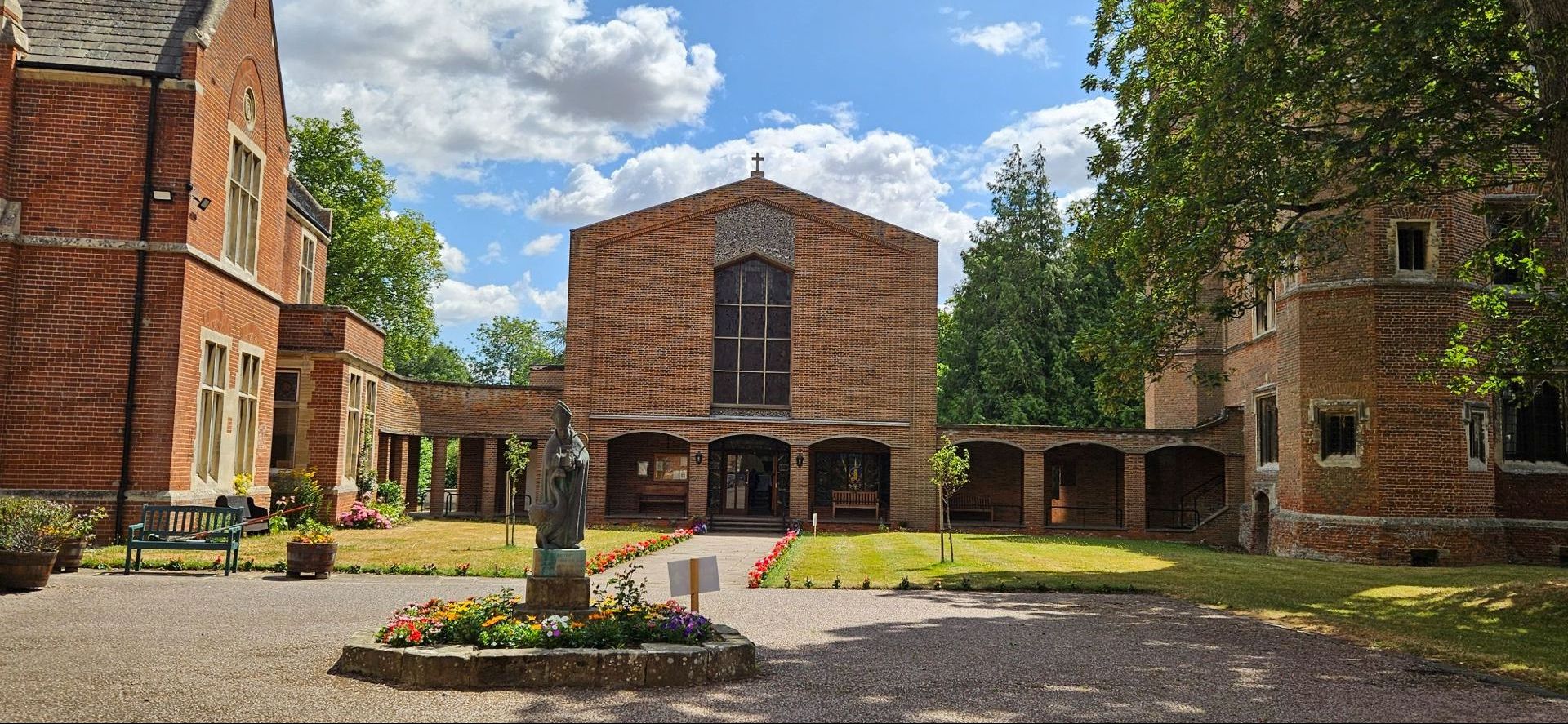
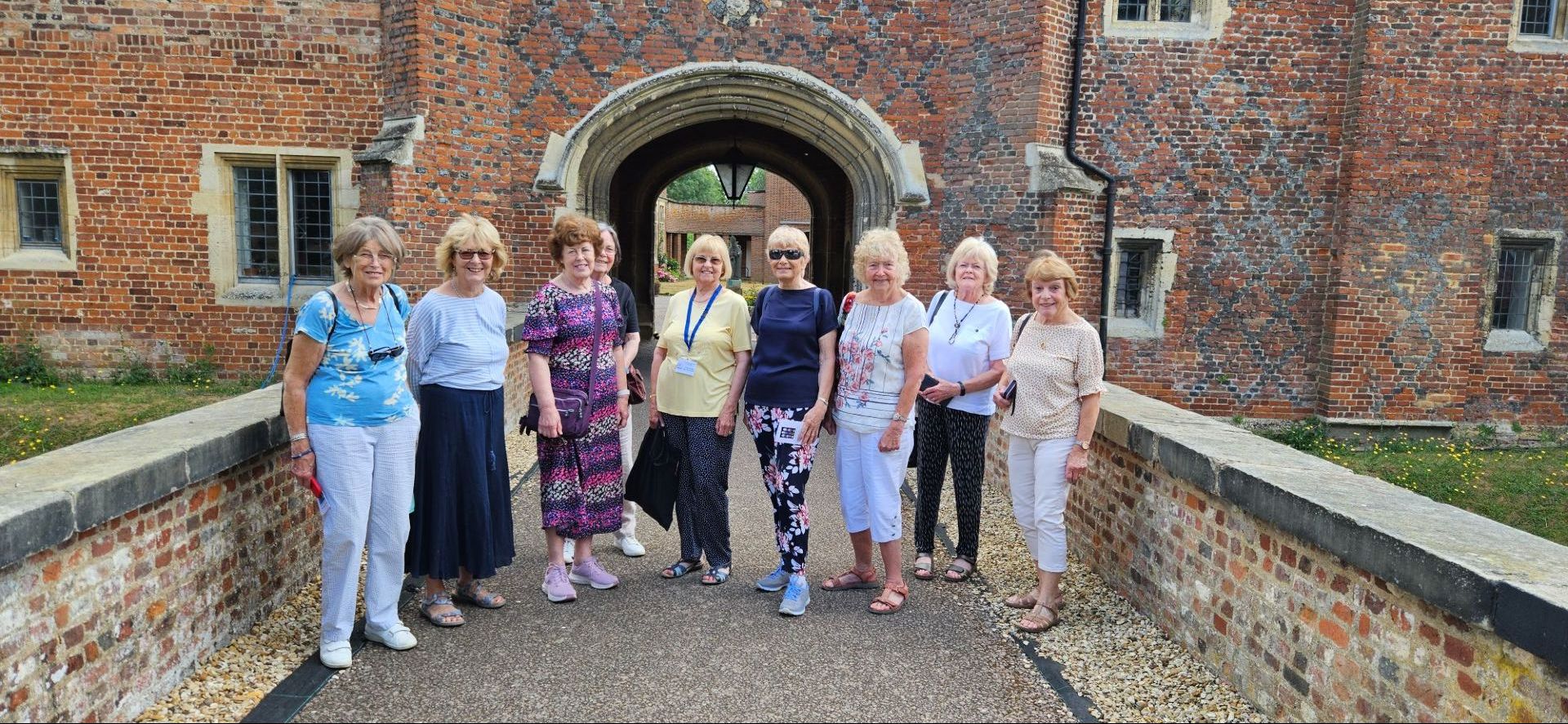
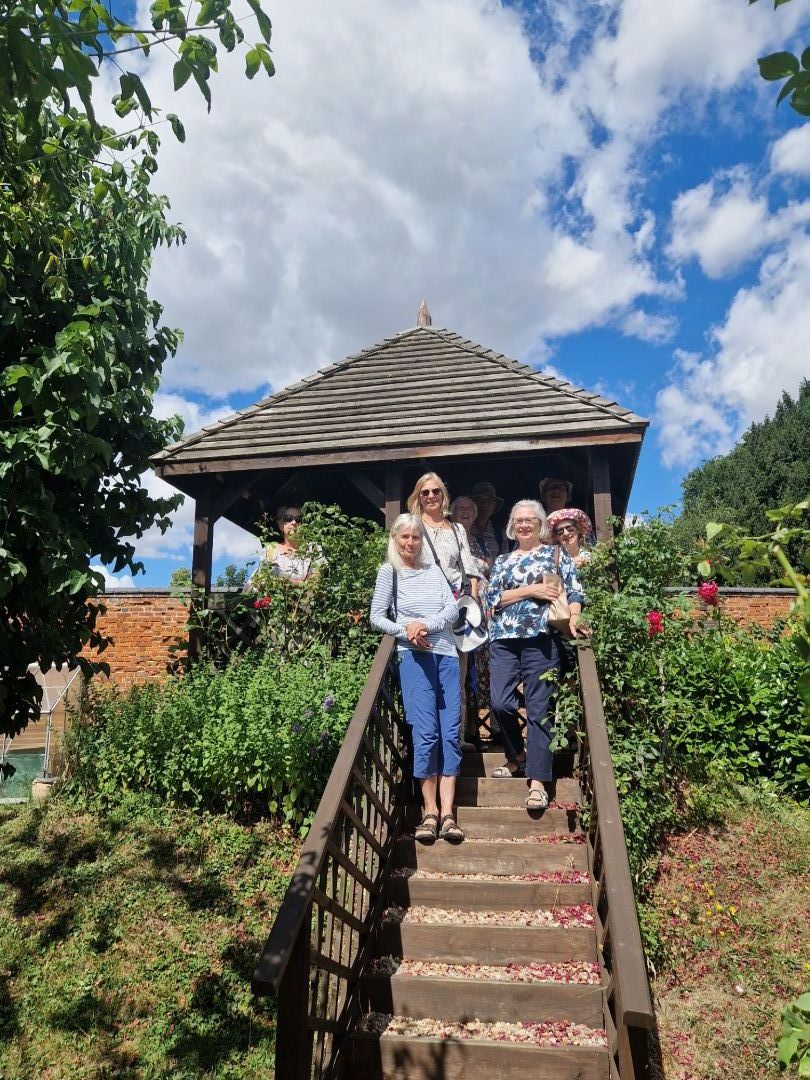
Buckden Towers (originally Buckden Palace), was originally built in the 13th century for the Bishop of Lincoln as a stopping point on regular journeys between London and Lincolnshire. It has had many alterations, including the building of a Victorian modern Arts and Crafts house by Mr Marshall of Marshall and Snelgrove, a fake mediaeval extension for Napoleon 3rd and a Catholic Church housing beautiful modern stained-glass windows by Paul Quail,
In 1956 it was passed on to the Claretian Missionaries who embarked upon a restoration campaign. At present Buckden Towers is still owned by the missionaries and is used as a spiritual retreat. It can also be booked for private conferences and events. The Inner Gatehouse has been converted into six fully furnished self-catering apartments and a teashop. During our tour of the gardens, we saw the stage set up for an out-door theatre production.
After a generous picnic lunch in the Victorian house and a walk around the lake, we had a short journey to Kimbolton Castle where Katherine of Aragon died.
Kimbolton Castle (and private boarding school)
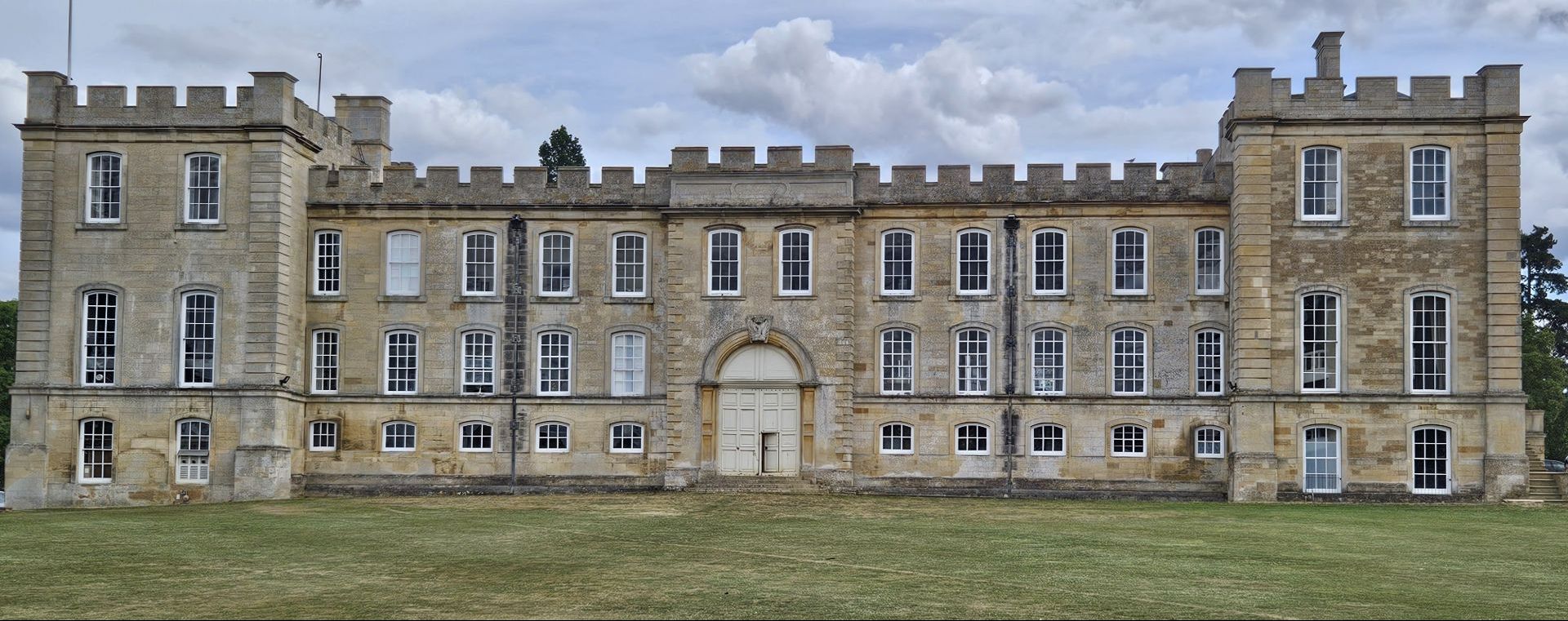
Photos: Front and rear of castle / Inner Countyard with Andrew Bamford on steps
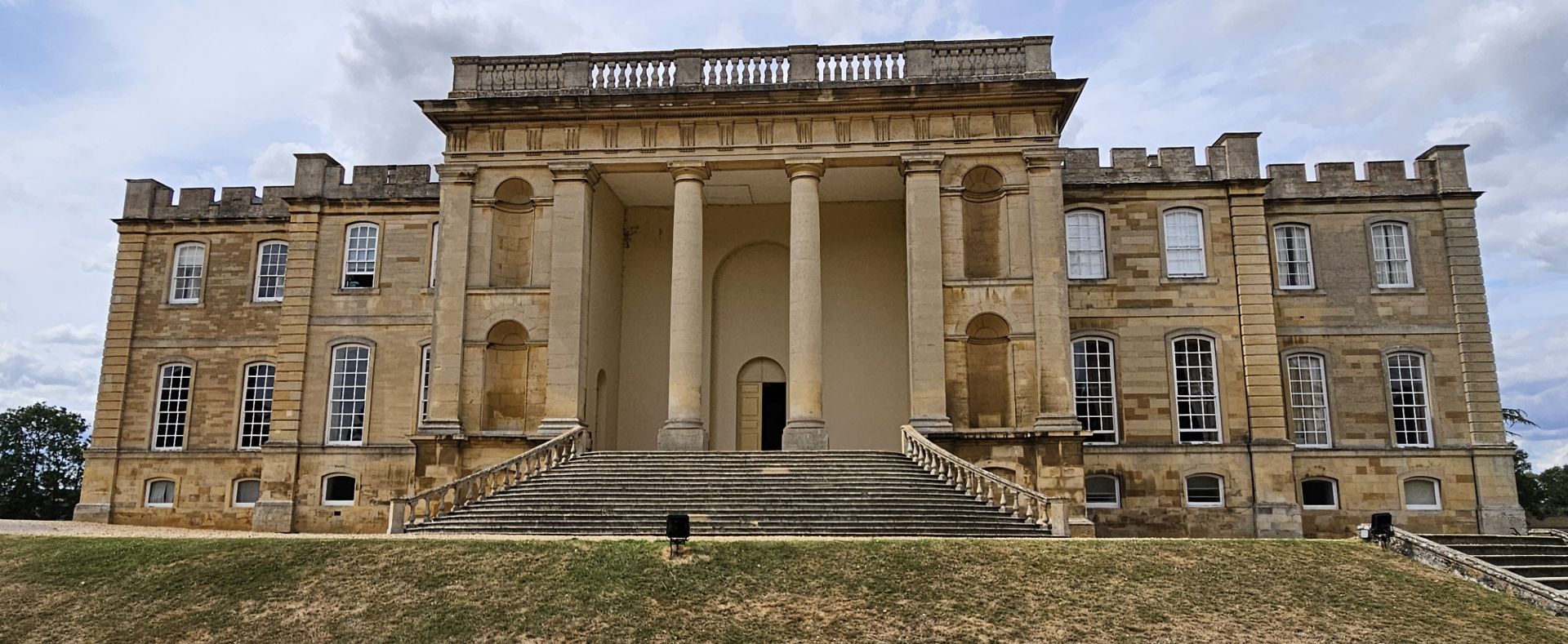
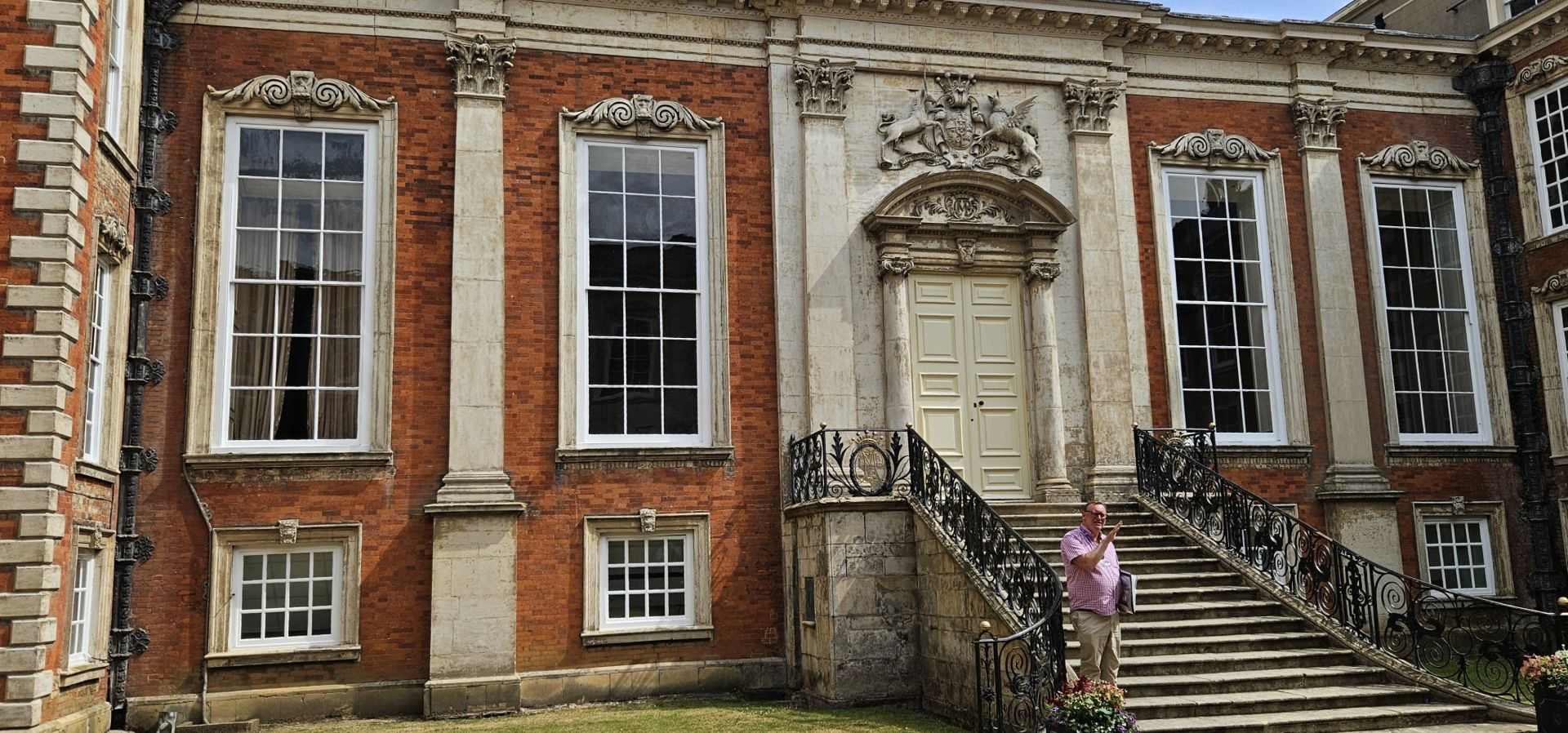
- There had been a wooden motte and bailey castle on the site since Norman times.
- The Castle changed hands several times during the middle ages and by 1520 it belonged to the Wingfield family who rebuilt it as a Tudor manor house.
- In 1615 the Castle was bought by Sir Henry Montagu (1st Earl of Manchester), and it remained in the Montagu family for over 300 years, during which time the castle underwent more rebuilding.
- Sir John Vanbrugh is responsible for designing the current castle in the early 18th Century.
- In 1708, the Venetian painter Giovanni Antonio Pellegrini was brought over to England to decorate the newly-built rooms, notably the wall and ceilings of the Main Staircase, and the chapel.
- Famous architect, Robert Adam, designed the Gatehouse (completed in 1766) which, apparently, was created to hide Kimbolton!
- In 1950, it was bought by Kimbolton School.
During the tour, we were intrigued by the paintings that illustrated which side they supported in the Civil War (Parliament) and then at the time of James 11: William of Orange.
A cup of tea in the very elegant staffroom completed our day which was enjoyed by all.
For more information, click on the links: Buckden Towers / Kimbolton Castle
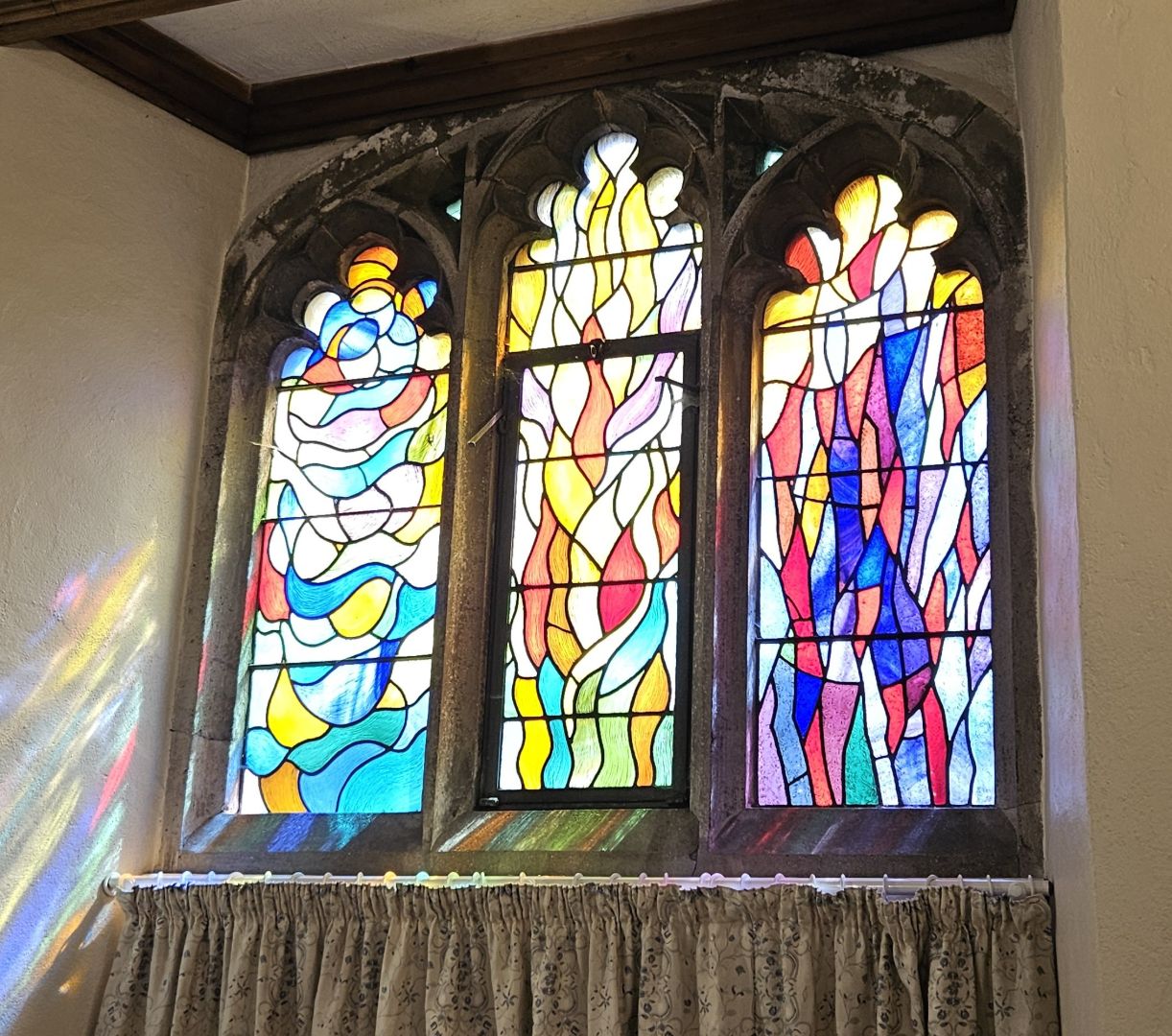
See separate article: Buckden Stained Glass




